TechRadar Verdict
In isolation, this is a really good phone. But in comparison with what else is on the market, its proposition falls apart. It’s not the best in the flagship price category, and there are phones offering almost as much that cost less. You can do better.
Pros
- +
Dual Leica cameras are fun
- +
Beautiful, bright QHD screen
- +
Ninety billion color options
Cons
- -
Overpriced and outclassed
- -
Navigation key is badly designed
- -
Not available in the US
Why you can trust TechRadar
The Huawei P10 and P10 Plus launched at Mobile World Congress in an unusual year, when Huawei didn’t have Samsung to steal its thunder. That said, the Leica-branded P10 still didn’t manage to be the star of the show – although, really, what could beat the Nokia 3310? – and its larger sibling didn’t raise too much excitement either.
At £679.99, the Huawei P10 Plus is priced right up there with the best, but doesn’t offer the waterproofing of the iPhone 7 Plus nor the wireless charging of the Samsung Galaxy S7.
It also reuses the Huawei Mate 9’s chipset, and while 6GB of RAM is great to see, that’s also available in the OnePlus 3T at almost £300 cheaper.
Meanwhile, Huawei’s EMUI interface is better than it once was – but when it’s up against Google's stock Android in the Pixel XL, it can’t win on that front either.
Combine this with some daft decisions – average sound quality; a confusing home/soft key combo; and not releasing in the US; and it’s difficult to recommend this phone. It’s not bad by any means, but it’s not the best at anything either.
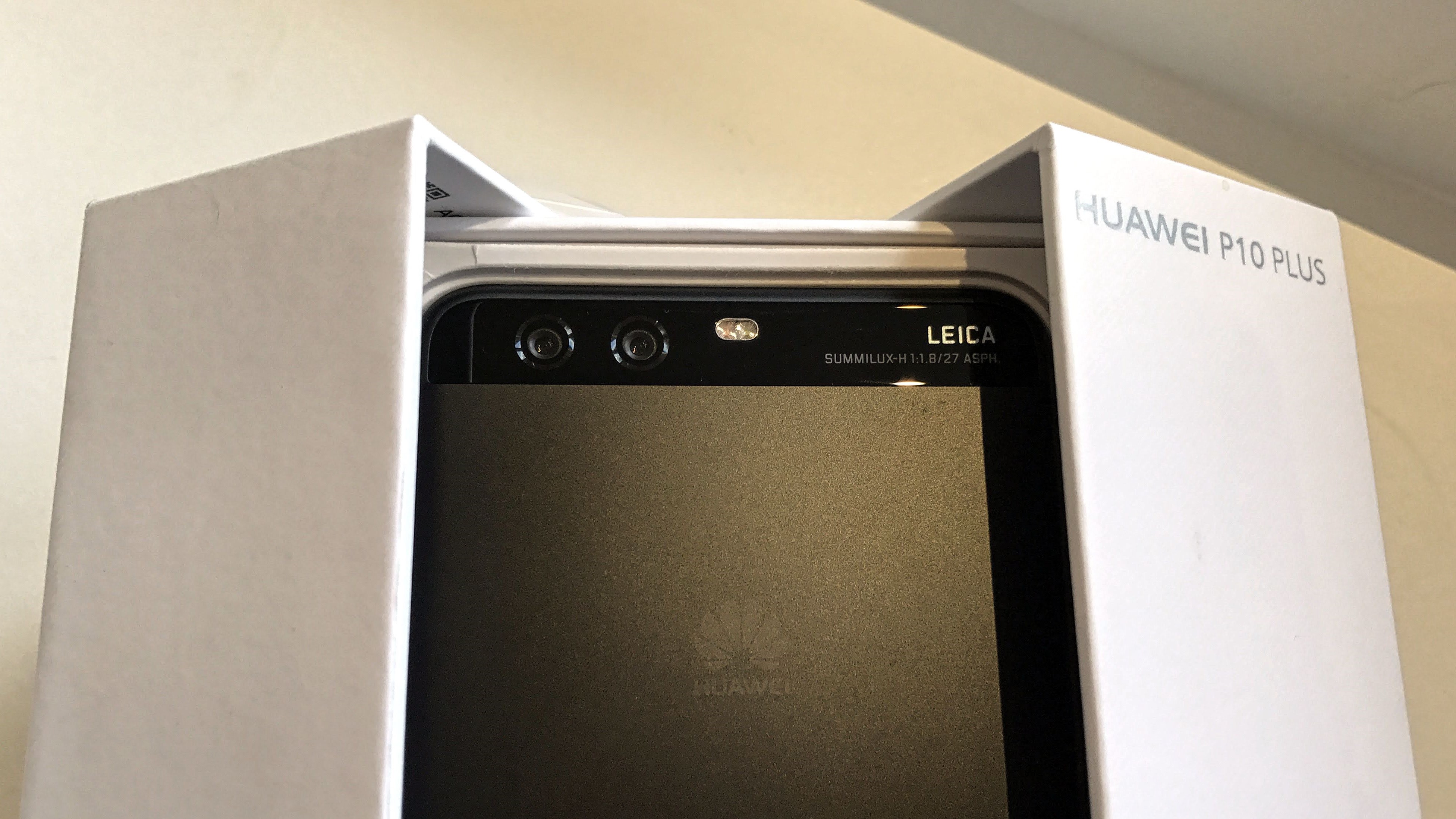
Hope you Leica taking photos
- Dual-lens camera
- QHD screen
For this phone, Huawei continued its partnership with Leica from the Huawei P9, although thankfully there was less of a focus on awkward celebrity spokespeople this time (we will never believe Superman and Black Widow use a Huawei, sorry guys).
Instead, we have dual cameras with no hump whatsoever, and photography is rightly the key selling point of the device. At 20MP and 12MP, these lenses combine monochrome and RGB sensors with a creative Wide Aperture mode to make photography really enjoyable, often with pro-level results.
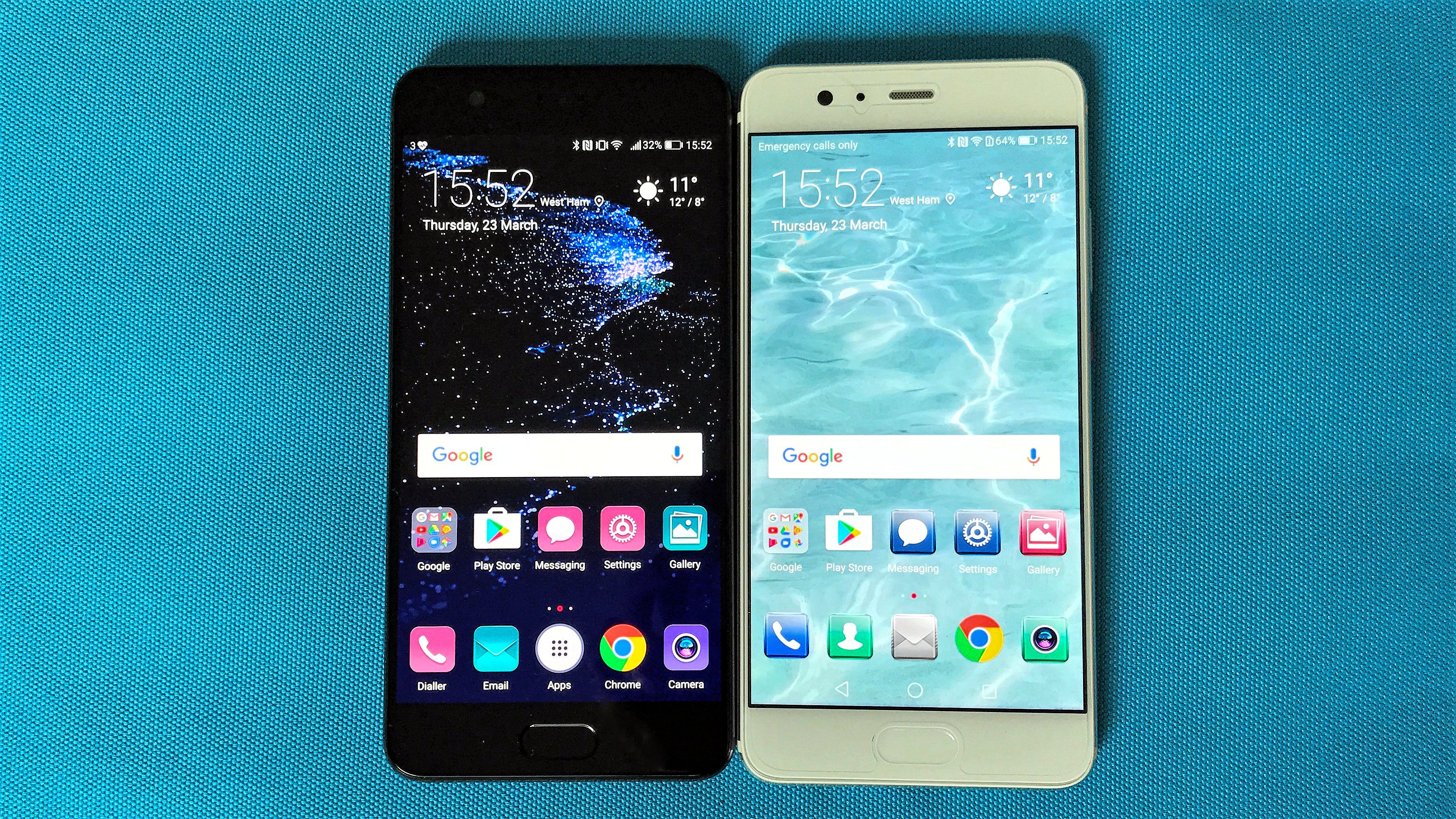
The spacious QHD screen and generous RAM allowance are also high points on the spec sheet, and Huawei made a huge song and dance of offering an insane amount of color choices, including Pantone’s color of the year (unfortunately mushy-pea green).
However, you can’t get any of those colors in the US, because you can’t get the phone there at all. And at £679.99 in the UK, the big P10’s plus points are looking a little overpriced.
In Australia however, the Huawei P10 Plus is available only in black for AU$1,099, which is puts it in the flagship arena at a much cheaper price point than many of its competitors.
Design
- More colors than a primary school classroom
- Slim and stylish
The first thing you’ll notice about the P10 Plus – other than its size, which presumably you were expecting – is that it’s surprisingly thin. At exactly 7mm, it’s 0.3mm slimmer than the iPhone 7 Plus, and you can bet your bottom dollar that was intentional.
The P10 Plus resembles its Apple competitor more than a little, too, but these days we’d be hard pressed to find a flagship that didn’t. It’s got the classic all-metal unibody with rounded corners, and a dual-camera setup on the back.
This is embedded in its antenna bar at the top, with no camera bump whatsoever: again, ner ner Apple. And of course, there’s a 3.5mm headphone jack, because – well, you get the picture.
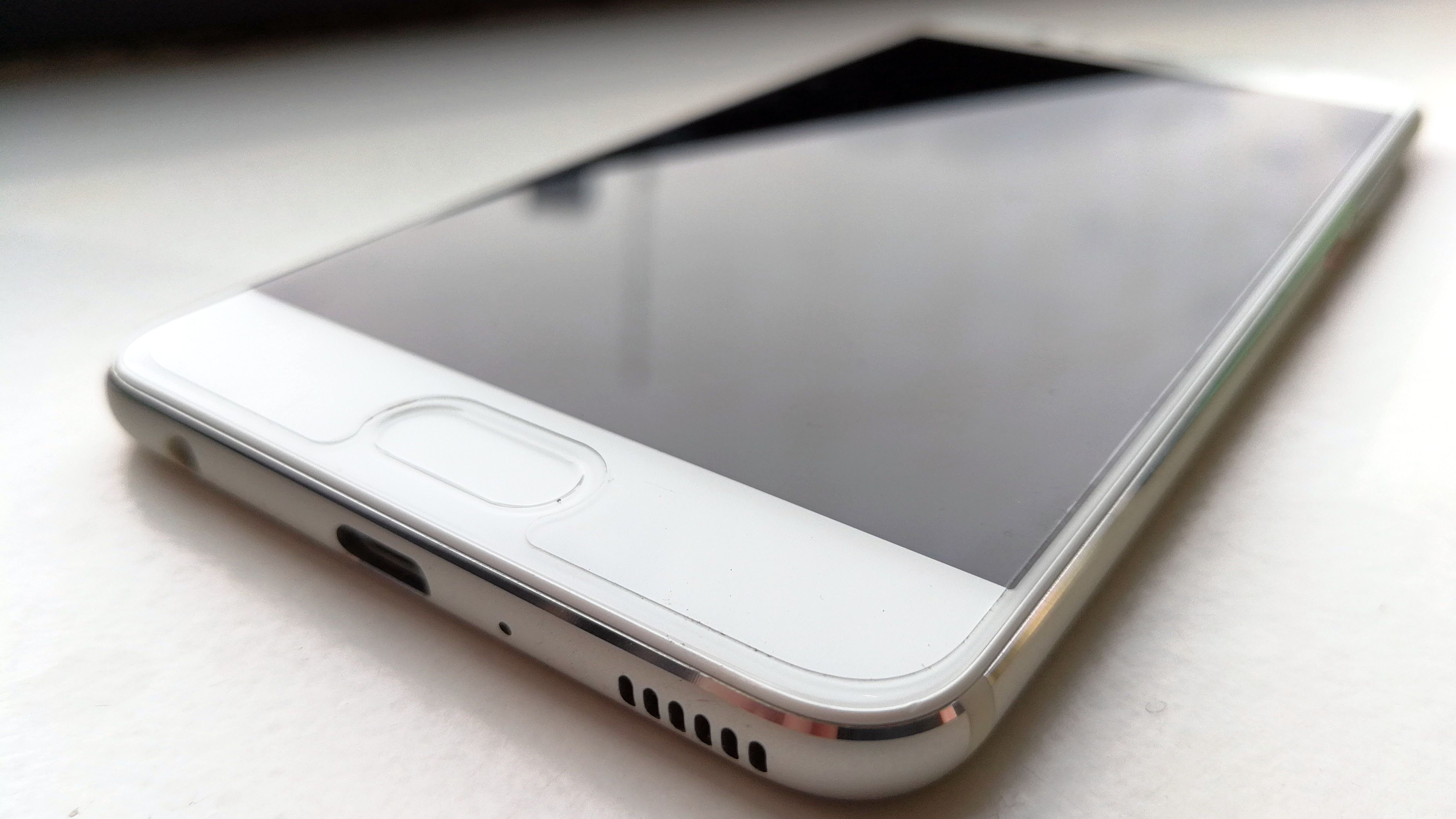
On the comfortably curved bottom edge, you’ll find a solo speaker, centred USB Type-C port and that much-loved headphone jack.
Switch to the top and you’ll find an IR blaster, something that’s becoming a bit of a rarity lately. The top of the left edge houses the SIM and microSD slot, and on the right edge there’s the volume rocker at the top, and, on our Graphite Black handset, a rather lovely etched power key edged in red.
This one little design touch is surprising given the low-key look of the rest of the phone, but there are many (MANY) other color options available if you’d like something more fun.
There are seven versions of the Huawei P10 Plus in all:
- The basic metals, namely Graphite Black, Mystic Silver and Rose Gold.
- Pantone-collaboration Greenery (color of the year, apparently. Color of our nan’s bathroom suite, also).
- Ceramic White (note: not actually ceramic).
- Two in ‘hyper diamond’ anti-fingerprint finish, called Dazzling Blue and Dazzling Gold.
Of course, if you want anything other than black, it’ll be a toss-up whether your country and network offers it.
Always the way with funky colors, like the Google Pixel’s ‘Really Blue’ option that turned up many months after the black and silver versions (in the UK, at least).
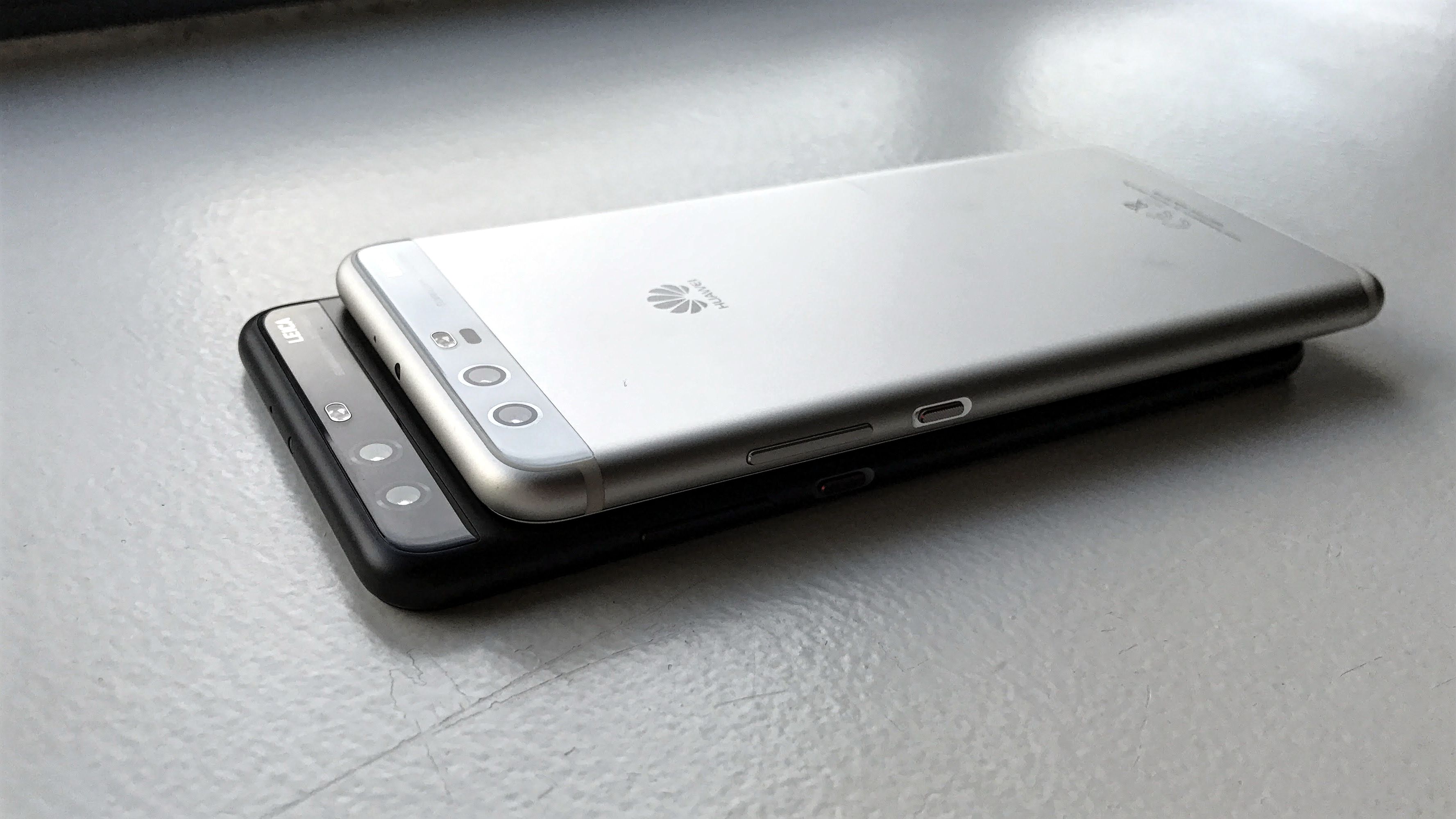
Display
- QHD resolution
- Tough Gorilla Glass 5
- Picks up grease
Taking the P10 Plus out of its rather beautiful double-doored box, you’ll go to peel off the plastic screen covering and find another one underneath.
Some manufacturers, like OnePlus, have started pre-applying plastic screen protectors to new phones – presumably to save people who buy them from bubbles and misaligned edges – and it seems Huawei has joined them.
You can peel the protector off very easily, and you’ll be tempted to because it feels and looks really horrible on your expensive box-fresh phone.
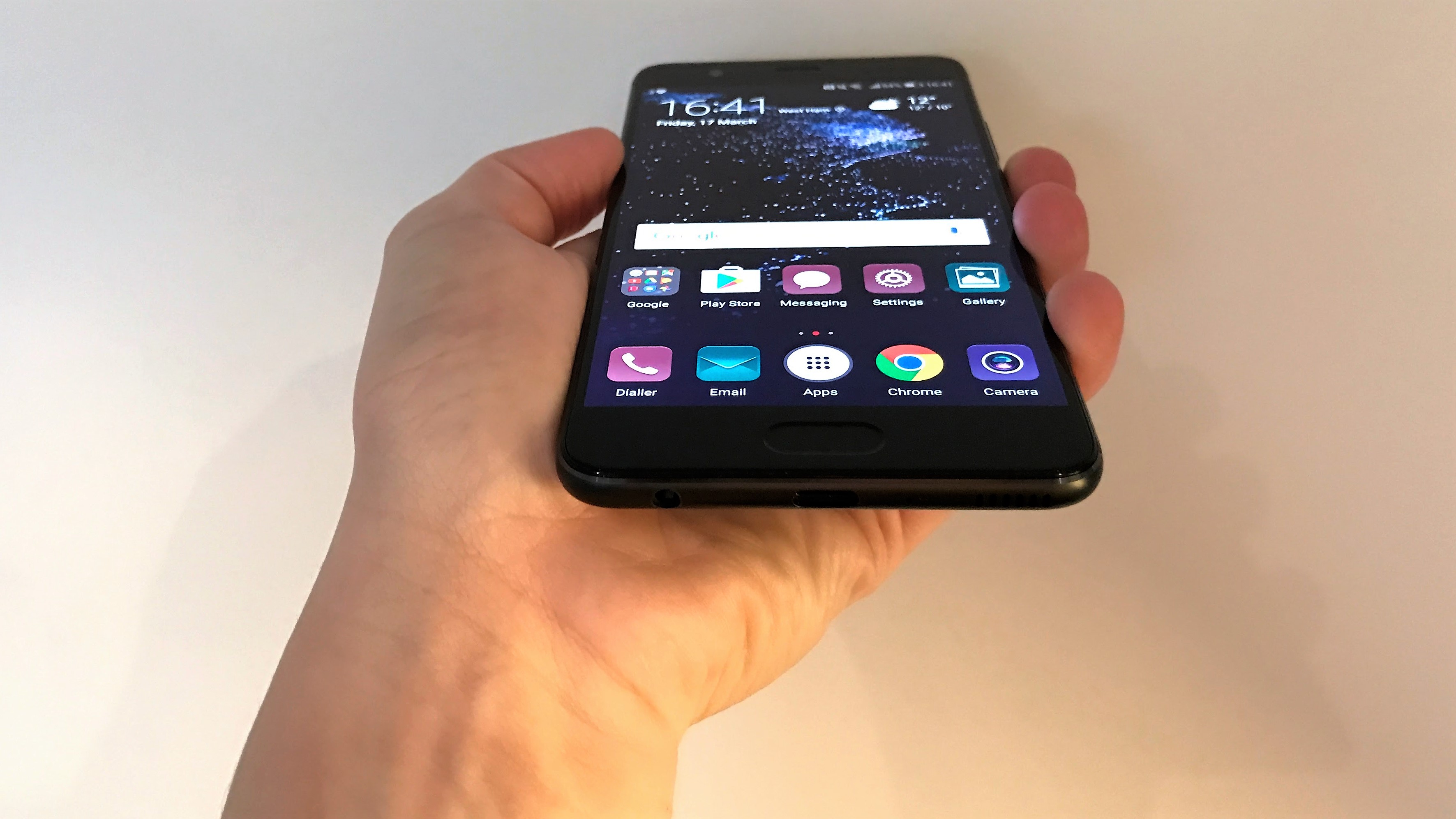
However, the screen is surprisingly not oleophobic (which is a coating applied to most phone screens to repel oil), so if you do remove the protector, not only are you more susceptible to smashing but your phone will become a disgusting grease-fest too. What a choice.
On the bright side, the display does come with Gorilla Glass 5, so you have some inbuilt crack protection even without the plastic cover. It’s bright and colorful, with slim side bezels, and somehow looks more integrated into the phone than many. It won’t outshine a Samsung panel, but it’s plenty pretty enough for most.
It’s also good enough for mobile VR, with the generous size, 1440 x 2560 resolution and 540 pixels per inch giving an immersive experience even right by your eyeballs.